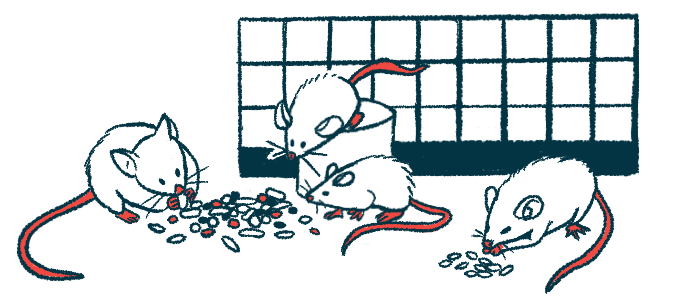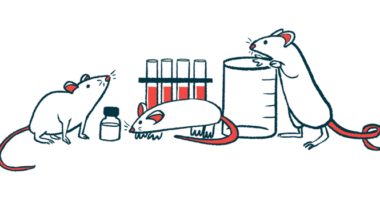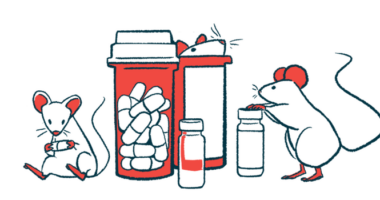Breathing therapy shows promise in Pompe mouse model: Study
Noninvasive intervention led to small increases in breathing rate, breath size

A simple, noninvasive breathing intervention that briefly exposes the body to repeated bouts of low oxygen modestly improved breathing in a mouse model of Pompe disease, a study showed.
Therapeutic acute intermittent hypoxia (tAIH) led to small but measurable increases in breathing rate, breath size, or the amount of air moved with each breath, and ventilation, or the amount of air moved per minute, according to researchers.
These benefits were likely related to a better observed response of the body’s breathing system to stress, improved communication between nerves and the muscles that control breathing, and strengthening of nearby supporting muscles.
“The findings here support tAIH as a potential adjunctive therapy for Pompe disease,” researchers wrote.
The study, “Therapeutic acute intermittent hypoxia modestly improves breathing in Pompe disease,” was published in the journal Respiratory Physiology & Neurobiology.
Breathing problems are experienced by nearly all people with Pompe
In Pompe disease, mutations in the GAA gene result in an absent or faulty acid alpha-glucosidase (GAA) enzyme, which normally breaks down glycogen into glucose — the sugar cells use for energy. As a result, glycogen accumulates inside cells, particularly in muscle and nerve cells, where it disrupts normal function and drives Pompe symptoms.
Breathing problems are experienced by nearly all people with Pompe. In children with the infantile-onset form of the disease, these symptoms are often the first to appear, frequently leading to the need for breathing support as the condition progresses.
These difficulties stem not only from weakness in the diaphragm, the major muscle involved in breathing, and other breathing muscles, but also from impaired signaling between motor neurons and these muscles. Motor neurons are the nerve cells that control movement.
Currently approved Pompe treatments aim to restore the missing GAA enzyme by supplying it directly through enzyme replacement therapy (ERT). However, ERT cannot reach the brain, where the diseased motor neurons reside, meaning that “untreated cell types hinder long-term efficacy,” the researchers wrote.
As such, “there is a critical need to develop alternative treatment strategies for Pompe disease that improve breathing ability by improving respiratory motor neuron function,” the researchers wrote.
One such approach is tAIH, a noninvasive technique that, by briefly exposing the body to repeated bouts of low oxygen, helps strengthen the breathing system. Benefits in respiratory and non-respiratory motor function have already been shown in people with amyotrophic lateral sclerosis, another neuromuscular disease.
Researchers test whether tAIH can improve breathing capacity
In this study, researchers at Duke University used a mouse model of Pompe disease to test whether tAIH could improve breathing capacity.
Healthy mice and mice with Pompe-like disease were exposed to 10 cycles of normal air and low-oxygen air, with each cycle lasting about five minutes. The four-month treatment was given daily for a week, then twice weekly. Control mice received continuous room air as a sham treatment.
After one week of treatment, Pompe mice exposed to tAIH generally showed improvements in breath size and ventilation compared with untreated Pompe mice, but these differences failed to reach statistical significance. Modest gains were also observed for breathing rate and overall ventilation at four months.
Healthy mice generally showed significant breathing improvements after one week, but these benefits had disappeared by four months.
The researchers then tested the animals’ chemoreflex, or the body’s automatic response that adjusts breathing to keep oxygen and blood pH at healthy levels. They found that tAIH only modestly improved breathing under mild stress, such as either low oxygen or high carbon dioxide alone, in both healthy and Pompe mice.
But when animals were exposed to both low oxygen and high carbon dioxide together, a condition that leads to maximal chemoreflex activation and strongly stimulates breathing, tAIH’s benefits were much clearer.
Specifically, after one week, tAIH-treated Pompe mice showed significantly faster breathing rates, larger breaths, and greater ventilation compared with untreated Pompe mice. Treated healthy mice also improved at this time point, with significantly higher ventilation and a modest, nonsignificant rise in breathing rate.
Most of these effects faded in healthy mice at four months, but Pompe mice still showed significantly higher ventilation and a strong trend toward larger breaths.
Breathing therapy also showed benefits in spinal curvature
Treatment also showed benefits in mice with Pompe-like disease beyond breathing, as tAIH prevented kyphosis, a spinal curvature typically seen in the mouse model due to trunk muscle weakness that reduces chest cavity space and limits air intake.
The researchers suggested that changes to the trunk muscles likely helped prevent kyphosis and contributed to the breathing improvements seen in Pompe mice.
At the cellular level, tAIH also improved connections between motor neurons and the diaphragm.
The findings indicate that “both [short-] and long-term tAIH treatment slightly improves breathing in” mice with Pompe-like disease, the researchers wrote, and that improvements “are most obvious with elevated respiratory drive caused by maximal chemoreflex activation.”
The researchers emphasized that despite the study’s limitations, the findings suggest tAIH could serve as an add-on therapy to GAA replacement therapy.








